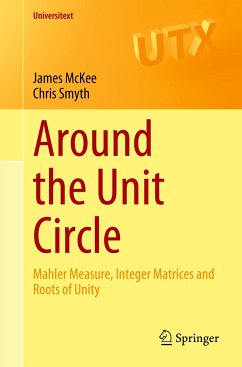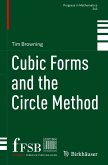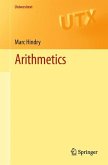Mahler measure, a height function for polynomials, is the central theme of this book. It has many interesting properties, obtained by algebraic, analytic and combinatorial methods. It is the subject of several longstanding unsolved questions, such as Lehmer's Problem (1933) and Boyd's Conjecture (1981). This book contains a wide range of results on Mahler measure. Some of the results are very recent, such as Dimitrov's proof of the Schinzel-Zassenhaus Conjecture. Other known results are included with new, streamlined proofs. Robinson's Conjectures (1965) for cyclotomic integers, and their associated Cassels height function, are also discussed, for the first time in a book.
One way to study algebraic integers is to associate them with combinatorial objects, such as integer matrices. In some of these combinatorial settings the analogues of several notorious open problems have been solved, and the book sets out this recent work. Many Mahler measure results are proved for restricted setsof polynomials, such as for totally real polynomials, and reciprocal polynomials of integer symmetric as well as symmetrizable matrices. For reference, the book includes appendices providing necessary background from algebraic number theory, graph theory, and other prerequisites, along with tables of one- and two-variable integer polynomials with small Mahler measure. All theorems are well motivated and presented in an accessible way. Numerous exercises at various levels are given, including some for computer programming. A wide range of stimulating open problems is also included. At the end of each chapter there is a glossary of newly introduced concepts and definitions.
Around the Unit Circle is written in a friendly, lucid, enjoyable style, without sacrificing mathematical rigour. It is intended for lecture courses at the graduate level, and will also be a valuable reference for researchers interested in Mahler measure. Essentially self-contained, this textbook should also be accessible to well-prepared upper-level undergraduates.
One way to study algebraic integers is to associate them with combinatorial objects, such as integer matrices. In some of these combinatorial settings the analogues of several notorious open problems have been solved, and the book sets out this recent work. Many Mahler measure results are proved for restricted setsof polynomials, such as for totally real polynomials, and reciprocal polynomials of integer symmetric as well as symmetrizable matrices. For reference, the book includes appendices providing necessary background from algebraic number theory, graph theory, and other prerequisites, along with tables of one- and two-variable integer polynomials with small Mahler measure. All theorems are well motivated and presented in an accessible way. Numerous exercises at various levels are given, including some for computer programming. A wide range of stimulating open problems is also included. At the end of each chapter there is a glossary of newly introduced concepts and definitions.
Around the Unit Circle is written in a friendly, lucid, enjoyable style, without sacrificing mathematical rigour. It is intended for lecture courses at the graduate level, and will also be a valuable reference for researchers interested in Mahler measure. Essentially self-contained, this textbook should also be accessible to well-prepared upper-level undergraduates.
"The reader at the graduate level having enough time and energy can learn a lot from this book about the Mahler measure, conjugate sets of algebraic integers, and related results. Some chapters of the book are quite accessible to undergraduate students as well, and may serve as an introduction to their research in this area." (Arturas Dubickas, Mathematical Reviews, May, 2023)
"It contains some material that is unavailable elsewhere. Each chapter is concluded by notes and a glossary of newly introduced definitions. ... The reader at the graduate level having enough time and energy from this book can learn a lot about the Mahler measure, conjugate sets of algebraic integers and related results." (Arturas Dubickas, zbMATH 1486.11003, 2022)
"It contains some material that is unavailable elsewhere. Each chapter is concluded by notes and a glossary of newly introduced definitions. ... The reader at the graduate level having enough time and energy from this book can learn a lot about the Mahler measure, conjugate sets of algebraic integers and related results." (Arturas Dubickas, zbMATH 1486.11003, 2022)








